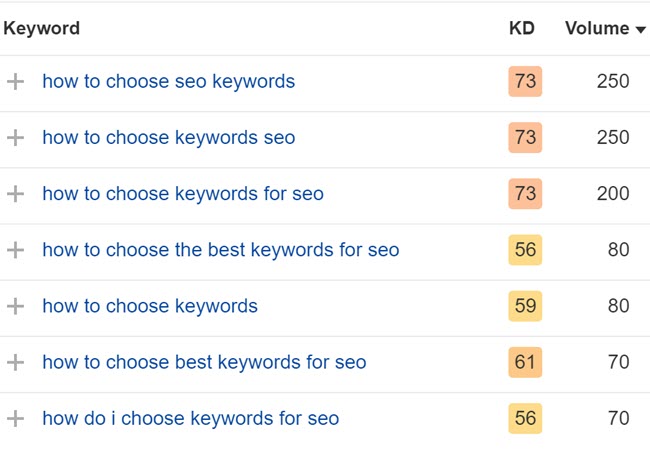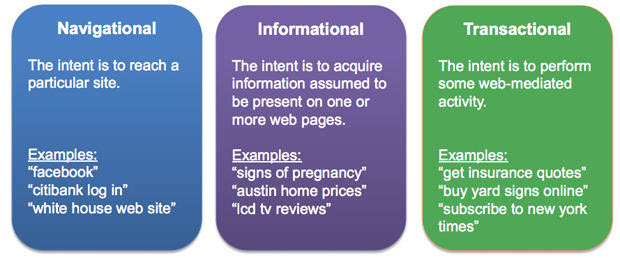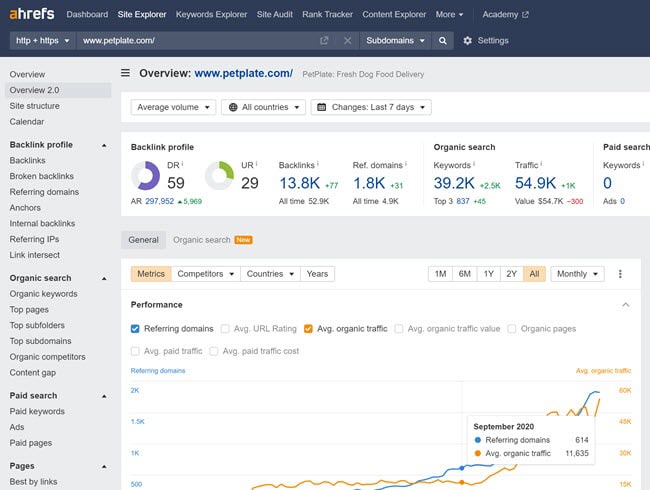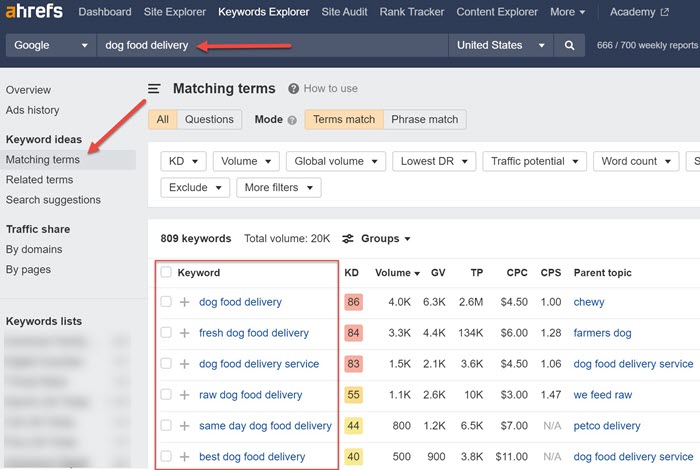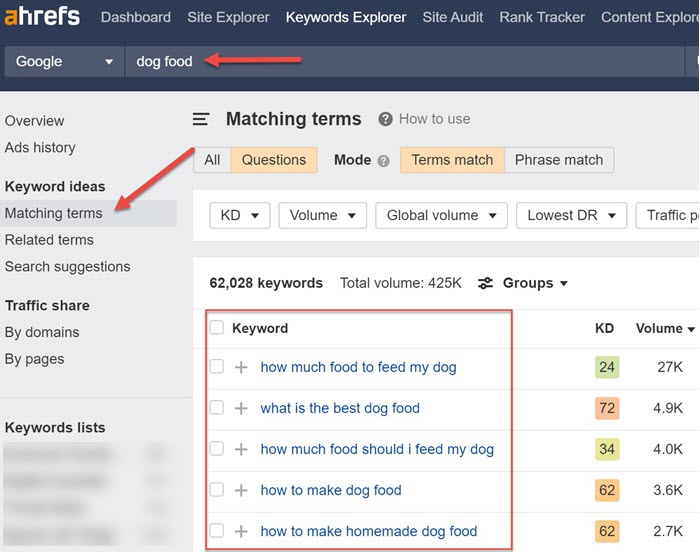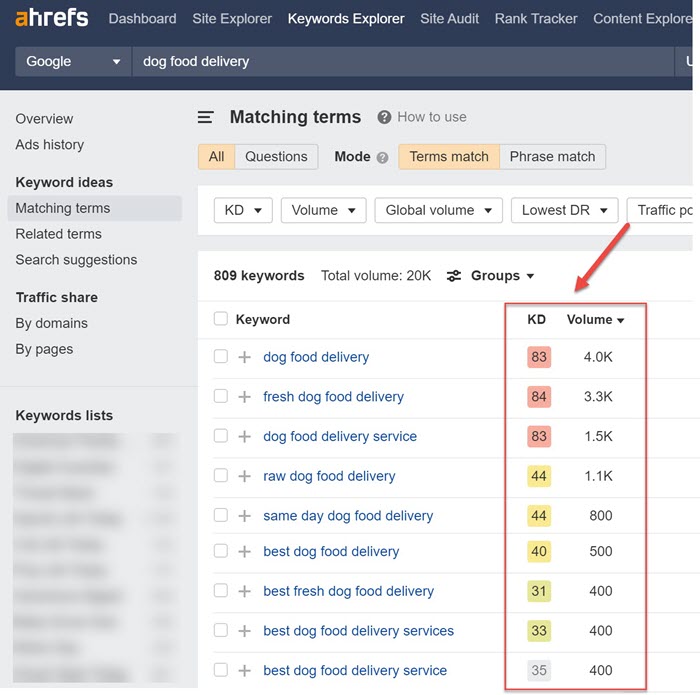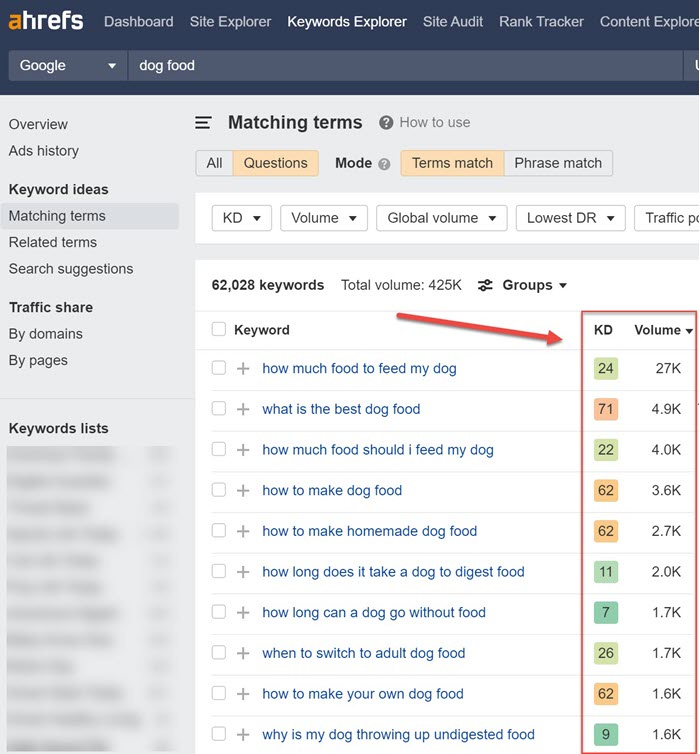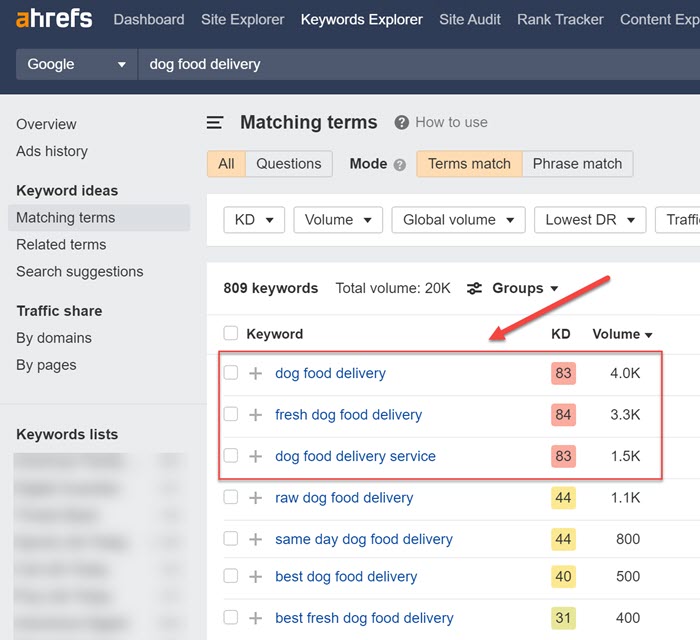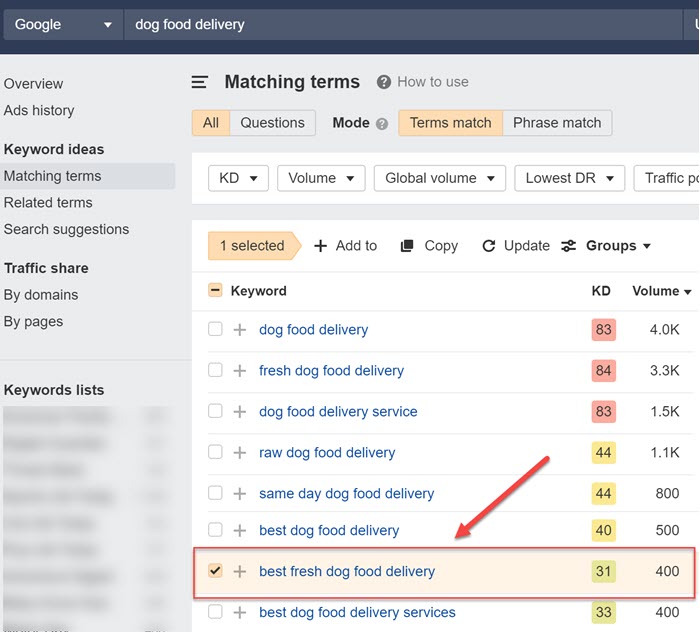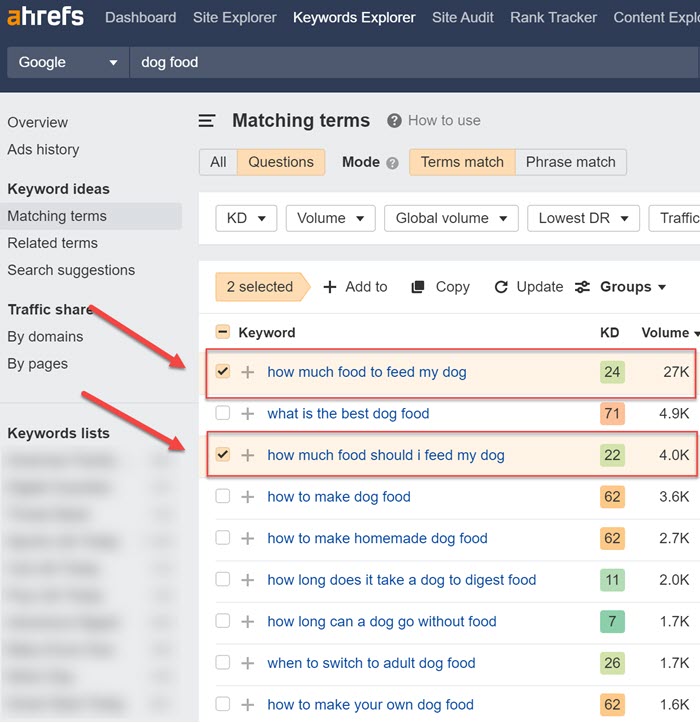Keyword research is the cornerstone of search engine optimization (SEO), and its the first step in any SEO campaign. But is it really possible to do keyword research in only 5 minutes?
Of course it is!
If you’re trying to find the right keywords for an article that you’re writing or a page you’re optimizing, then it’s entirely plausible to do effective keyword research in just 5 minutes. That’s because the time it takes to do keyword research effectively is dependent on the size and scope of the project.
On the flipside, if you’ve got a big client or a large scale project, you can often spend an entire week on keyword research. But for an article or a product landing page, it’s completely reasonable to do 5 minutes worth of successful keyword analysis.
So how exactly do you do keyword research in only 5 minutes?
Let’s dive deeper into keyword research, the role it plays in SEO, specific examples as well as the 5 steps involved in doing keyword research quickly and effectively in just 5 minutes.
In This Article
What is Keyword Research?
If you’re looking for a textbook definition of keyword research, here’s mine:
“Keyword research is the process of identifying, analyzing and selecting the right keywords to target for your website.”
With every SEO engagement I’ve ever launched (and there have been hundreds), keyword research is always the first step.
What’s funny is there have been countless articles and “SEO thought leaders” over the years who have proclaimed that keywords are dead! That, you shouldn’t focus doing keyword research and finding the right keywords to target for SEO. Why? Because Google doesn’t use keywords any longer; it uses searcher intent or queries not keywords.
While those claims are both accurate, whether or not you call the terms you’re using to inform your SEO efforts “keywords” or “queries driven by searcher intent” is really just semantics. To me, they’re exactly the same thing.
So is keyword research really dead? NO! Keywords are alive and well in SEO.
In fact, selecting the right keywords to target is one of the most important facets of an SEO campaign. If you do it well, you’re setting yourself up for success.
What is the Purpose of Keyword Research?
The purpose of keyword research is to use these target keywords as a guide to either:
- Optimize existing content/pages on your website
- And also to inform the creation of new, targeted search acquisition content assets (articles, guides, landing pages, etc.)
The primary objective of keyword research is to help a website (and it’s content) gain more visibility in the organic search engine results (SERPs) and drive targeted, organic search traffic (and qualified leads) to a website.
As mentioned above, keyword research also helps to guide in your content creation efforts. It informs topics, subsections in your articles and guides.
And everyone knows that SEO is really content marketing.
What does that mean? It means that the only way to effectively target keywords is with content. And the only way to find these high value keywords to target is by doing keyword research.
How to Choose the Right Keywords
When it comes to selecting the right target keywords, there are four rules to follow. Make sure the keywords you target are:
- Highly Relevant: To either your your product, your service, your industry or your audience.
- Highly Searched: The keyword you choose to target should have demonstrated search demand, meaning there’s proof that your audience is actively searching for these terms.
- High Intent: When selecting keywords, you need to understand the intent of the user searching these keywords. What are they trying to accomplish? This intent will dictate whether or not specific keywords are a fit. (we’ll discuss search intent in greater detail later)
- Not Hard to Rank for: The level of difficulty shouldn’t be too high for your website or content to rank well in the search engines. Because if you can’t rank for your keywords, you wont’ get any real traffic.
Be sure to follow these four guidelines because its important to get keyword research right because it influences and informs all of your SEO decisions.
Getting keyword research right will decide the difference between a successful SEO campaign or one that fails.
Keyword Research in 5 Steps (and 5 Minutes)
Here’s how to do keyword research in only 5 minutes (and in just 5 steps). Each step will take you about a minute (give or take), depending on how quick or how methodical you are.
When it comes to process-driven “how to” articles like this one, I like to use specific examples to demonstrate the process. So for these steps we’ll imagine that I’ve been hired by a company with a pet food delivery service.
When starting a new engagement, I send the client an SEO questionnaire so they can share pertinent information about their market segment, their target audience, any specific keywords or industry terms they think would be successful, etc.
This is the precursor to starting my keyword research. The information gathering piece.
Now, on to the steps in the 5 minute keyword research process.
Step 1: Identify Your Target Audience
The first step in the 5 minute keyword research process is to figure out exactly who your target audience is. These are the users you want coming to your client’s site.
For this keyword research example, we’ll use a fictitious fresh pet food delivery company as an example. They’ve hired us for keyword research and they would like us to find them two high-value keyword opportunities:
- A keyword they could use to target an informational article (a topic that’s relevant to their product and service)
- A keyword to target that’s more transactional in nature (more on that later), essentially a keyword that will effectively target their audience and help sell their product.
So let’s get a sense of who our client is targeting.
In our SEO questionnaire, the marketing team at the dog food delivery company explained that they’re in the pet niche. However, they only cater to dogs.
This is important information because it would be a complete waste of time (ours and the clients) if we researched a bunch of keyword opportunities related to cats and cat owners.
So the key takeaways here are:
- Our Target Niche: Pets, but really it’s just dogs
- The Target Audience: Dog owners
Step 2: Determine What They’re Searching For
Once you know who your target audience is, you want to answer the following questions:
- What kind of information are they searching for?
- What types of problem are they trying to solve with those searches? What are their pain points?
- How is your product (or service) relevant to those search queries?
- How is your product a potential solution for those queries?
Let’s jump back to our example. We know we’re targeting dog owners. The goal is to get them to our client’s website (via search) so we can promote our client’s pet food and delivery service.
Which types of queries would dog owners be typing into Google where a dog food delivery service would be a solution? Well, we’re likely going to want to target a few different categories:
- Dog food: This would be the most obvious area to explore, given this is highly relevant to the client’s product/service
- Dog nutrition: Dog food is key component of a dog’s nutrition, so there’s a high degree of relevancy here as well
- Dog health: Nutrition is a subset of pet health, so we can also target keywords around the health of a dog
Before we go further, I want to talk more about keyword intent and the role it plays in keyword research. Different keywords have different intent, and the intent of the user usually dictates the type of content asset you target.
What is Search Intent, How Does It Influence Keyword Research?
Search intent is the underlying motivation or purpose behind a user’s search query (i.e. what they’re trying to accomplish/learn from their search).
There are three different types of keyword, each with different search intent:
- Informational – Informational keywords are terms searched to gather information about a topic. These keywords are more “top of the funnel”
- Transactional – These keywords that are considered transactional in nature because the intent behind these queries are of purchasing a product or seeking a paid solution.
- Navigational – These are branded keywords, meaning they include the company’s name/brand in the query. Navigational keywords aren’t really what I consider a part of SEO. In short, you should rank for your brand regardless of if you’re working with an SEO.
By understanding the intent behind specific search queries, an SEO is better equipped to:
- Choose the right keywords for a client (and the client’s specific objectives)
- Determine what stage of the user funnel that searcher is at (are they gathering information or are they ready to buy based on their search query?)
- Map those keywords to the right piece of content (whether it already exists or needs to be created)
This not only improves the user experience, but it also increases the likelihood of the content ranking higher in search results, which leads to more traffic and more conversions.
So as you can see, when you determine what the user is searching for it’s also imperative you understand what their intent is.
How Does Searcher Intent Align with Our Client’s Goals?
Back to our dog food client. If we take the potential high-level keyword categories they’re probably searching, we can hypothesize what their intent might be and if that aligns with our clients goals and how to prioritize.
- Dog food: At face value, we can assume that a user searching for dog food options would be a very-high value target
- Dog nutrition: This is also relevant, but it’s probably not going to be a keyword that will drive sales, at least not direct sales. So maybe this is better suited for our informational article topic.
- Dog health: The trouble with this category is it could be anything. The searcher might be wondering why their dog has pus in their eye and what to do about it (which isn’t very relevant at all). Or they could be wondering why their dog is so tired all the time, and the client could message to them that a better, healthier diet with dog fresh food is one way to revolve sluggishness.
So of these three categories, I would make the first two (dog food and dog nutrition) as our priorities regarding what our audience is searching for.
Step 3: Choose a Keyword Tool and Start Your Research
Keyword Tool Options
Once you know your niche and your target audience, it’s time to leverage a keyword tool, so you can conduct in-depth, granular keyword research. These keyword research tools can provide invaluable insights into:
- Lists of relevant keyword opportunities that your audience might be searching for in Google (and other engines)
- How popular each of those keywords are
- How difficult it might be to rank for those keywords
When it comes to keyword tools, there is no shortage of really good options. The best keyword tools are paid, but each of them offers a free version (which are generally pretty limited in features and functionality).
I’m not going to walk through them all in this post, so here are some fantastic lists of paid and free keyword tools:
I typically either use AHREFs or SEMRush exclusively for my keyword research. I have the paid subscriptions for both and use each for different purposes (because they do much more than just keyword research).
For this article, I’m going to use AHREFs to demonstrate in the examples because it delivers pretty accurate results, it’s intuitive, I like the user-interface, the features, the reporting dashboards and it’s what I’m most comfortable with.
Starting the Actual Keyword Research
To begin researching, we’ll circle back to our hypothetical client.
We know they deliver dog food and want to get in front of dog owners. For this 5 minute keyword research project, they’d like us to target
- One transactional keyword
- One informational keyword
Finding a Transactional Keyword to Target
For a potential transactional keyword, we can pop the term “dog food delivery,” which would be considered more a transactional keyword because the intent of the searcher is to find a service that delivers dog food. So we pop that term into AHREFs and see what we get for results.
We want to know if it’s something people are actually searching for and what some other related keyword ideas might be that we can target. So we do the following:
- Head over to AHREFs Keyword Explorer feature
- Add “dog food delivery” to the search field
- Select “Matching terms” from the sidebar
And we get the following results:
It’s clear that users (potentially our audience) are searching for the keyword “dog food delivery.” Not only that, but there are more than 800 different variations of that seed keyword that we can target.
What’s more, most of these keywords are highly relevant to our client’s product and it is transactional, meaning the intent of the person searching for this keyword query likely wants to find a “dog food delivery service,” which is actually one of the related keywords.
Finding an Informational Keyword to Target
Next, we’re looking for a potential, informational keyword opportunity we can target. This will be a term that’s more aligned with a category like “dog health” or “dog nutrition.”
For this step, we can repeat the steps above, but use a more general, less specific keyword like “dog food”
- Head over to AHREFs Keyword Explorer feature
- Add “dog food” to the search field
- Select “Matching terms” from the sidebar
- Select “Questions”
By selecting the “Questions” slider, we will get a list of dog food keywords that have a much better chance of being informational
We see from these results, that there are more than 60,000 keyword opportunities that are questions users have about dog food or feeding their dogs. This is perfect for our client.
Step 4. Evaluate Search Volume and Level of Difficulty
As part of your 5 minute keyword research process, its of critical importance that you measure these two data points:
- Search volume – how many times a particular keyword is search (usually measured by month)
- Competitive level of difficulty – how difficult it will be to rank for a particular keyword (this is typically based on the relative strength of the pages/sites ranking for this keyword based on inbound links)
Why is this important?
- With search volume: You want to be sure you’re targeting a keyword that has some level of demonstrated search demand. Because there’s really no point targeting a keyword that your target audience isn’t searching for. Search volume estimates how often that keyword is searched each month.
- For keyword difficulty: You want to take into account how hard it will be to rank for a specific keyword so you’re not targeting terms that are too difficult to rank for. Because if you can’t rank for those keywords, you won’t drive any organic traffic to the client’s website.
So what exactly are you looking for when assessing search volume and level of difficulty?
With each of these metrics, it’s generally best to find the ideal nexus of:
- Medium-to-high search volume
- Medium-to-low ranking difficulty
The ideal scenario is to target high volume keywords that are the easiest to rank for. Unfortunately, it can be really difficult to find those keyword opportunities. The SERPs are very competitive.
Here’s a look at each of those potential keyword opportunities again so we can get a good look at search volume and difficulty levels.
In the above screenshot from AHREFs:
- Keyword Difficulty – Is represented by the column marked “KD,” which is a measure of how difficult (competitive) it will be to rank for that keyword. The higher the number, the harder it is to rank. The level of difficulty is also color coded, with red.
- Search Volume – Is the column labeled “Volume” and is the monthly estimate for how many times that particular keyword is searched
What do we see here? We’ll one of the takeaways is that the most popular, most searched keywords have the highest degree of difficulty. This is usually the case with most keywords but it’s especially true with transactional keywords because they’re the most profitable.
In short, these metrics will factor into your decision on which specific keyword(s) to target.
When we look at the keyword question opportunities for the informational seed term “dog food,” we get a list of keywords with an even high degree of popularity (searches) yet they’re not nearly as hard to rank for as the transactional keywords.
And generally speaking, informational keywords aren’t as profitable as transactional keywords, so it stands to reason that they wouldn’t be as competitive or as difficult to rank for.
For the next step, we’re going to review these keyword opportunities, the corresponding metrics and determine which specific keywords we’re going to target for our client.
Step 5. Choose Your Target Keywords
As the final step in our 5 minute keyword research process, it’s time to select our target keywords.
In the previous steps, we’ve identified a list of keywords that are highly relevant and have varying degrees of search volume and competition. Now, we want to narrow down our choices to the specific keywords we’re going to target.
So how do we choose the ideal keywords from the lists provided by the keyword research tool we’ve used? Let’s circle back to our dog food delivery client once more.
According to our keyword research, we’ve discovered that the transactional keyword we’ve chose to target has a lot of related terms with high search volume. However, the most popular and top searched keywords are incredibly difficult to rank for.
This is usually the case: The higher the demand, the greater the level of competition. Everyone wants to rank for those high volume keywords because they can be incredibly profitable for a business.
For our client, they have aged and authoritative domain, but it’s probably not authoritative enough to outrank competitors for those high difficulty keywords.
So a more reasonable option for them would be to target a keyword that’s still highly relevant to what they sell, but with lower search demand and also much lower keyword difficulty.
Given those criteria, a keyword like “best fresh dog food delivery” seems like the ideal target.
For our transactional keyword, we’d pulled a list of terms which were based on questions around “dog food.” In this case, the keywords we’re nearly as competitive as our transactional target keywords and there was even more search demand.
A really interesting opportunity would be to target the keyword phrase “how much should I feed my dog.” This isn’t a query that’s going to drive a ton of sales, but it is an opportunity for us to
- Rank for a keyword that is tangentially relevant to our product and service
- Get in front of our target audience (dog owners who are searching for nutritional information)
- Message to that audience about the client’s dog food delivery service
What’s also interesting about this keyword is that it’s almost identical to the most searched keyword “how much food to feed my dog.” And it’s highly likely the piece of content you map to this keyword will rank for both terms (double the traffic!).
What About Other Keywords on This List? Why Not Choose Those?
So what about the other keywords on the list? Sure, they have search volume and some aren’t competitive and they’re all somehow related to dog food. But in most of those cases, the intent of the searcher isn’t really aligned at all with our offer. In fact, in some cases it’s the polar opposite.
- “How to make my own dog food” – these are people who DON’T want to buy dog food. That’s not to say that someone who wants to know how much to feed their dog does want to buy our product, but at least we know
- “How long does it take for a dog to digest food” – This certainly is a question about dog health, but it’s not as interesting as something like how much to feed a dog. Also, it’s so much
- “When to switch to adult dog food” – this is another keyword that’s really interesting and one I’d prioritize over digesting dog food, but it’s not nearly as popular as my top choice. And it appears to take the same effort to rank for that, so it’s a no-brainer to go with our top pick.
So when all is said and done, I feel really good about our top choices.
And we did it all in just 5 minutes!
What Comes After 5 Minute Keyword Research?
Okay, so following your keyword researching and selecting your ideal keywords. What are the next steps?
With the example client above, they specified exactly what they wanted. But with most engagements, it will likely be more open ended and the client will look to the SEO for guidance on next steps following the keyword research piece.
Typically, once you’ve settled your target keywords (and they’ve been approved by your client), it’s time for content mapping. At this point, you need to either:
- Map these keywords to an existing, relevant page on the website (and optimize that page accordingly), OR
- Create a new content asset that’s highly relevant to your keyword and satisfies that user’s search query/provides them with the information they’re searching for
This is also where searcher intent comes back into play. There are different stages of content funnel:
- Top of funnel content: content designed to inform, educate. This is often content a user is shown and lands on your site when conduction an informational query. These types of users aren’t ready to buy a product or service at this stage. They’re more gathering information, learning about a subject.
- Bottom of funnel content: content designed to convert. These are users that have self-identified (by their query) that they want a solution to a problem, often a paid solution.
Top of the funnel content is generally educational and designed to inform your audience. So assigning your informational keywords to informational content you (or your writers) will create would be your best option here. You’ll want to brainstorm a relevant topic and create an article to rank for that keyword
On the flipside, for the transactional keyword, you want to map them content that’s more bottom of the funnel, where a user is ready to purchase a product or service. In some cases, those pages may already exist on a website. In other cases, they may need to be created.
Final Thoughts on Keyword Research in 5 Minutes
And there you go…that’s how you do keyword research in 5 minutes, as well as a look into what you do following the keyword research phase.
Again, not all keyword research can be done in only 5 minutes, but if you’ve got very specific instructions and need to identify a handful of relevant keywords you can target for your client (be it a single landing page or new article topic idea), keyword research can be done in 5 minutes.


